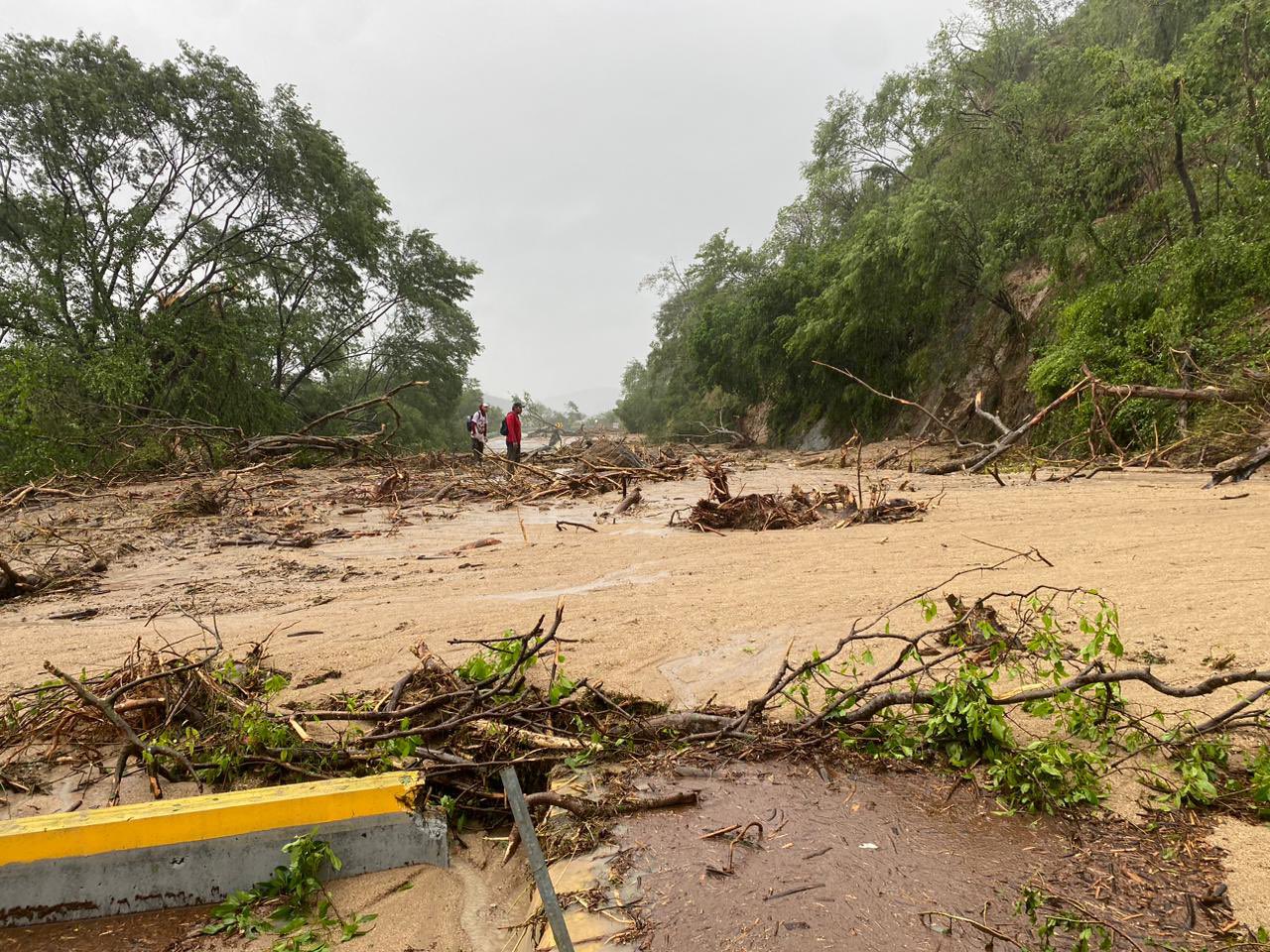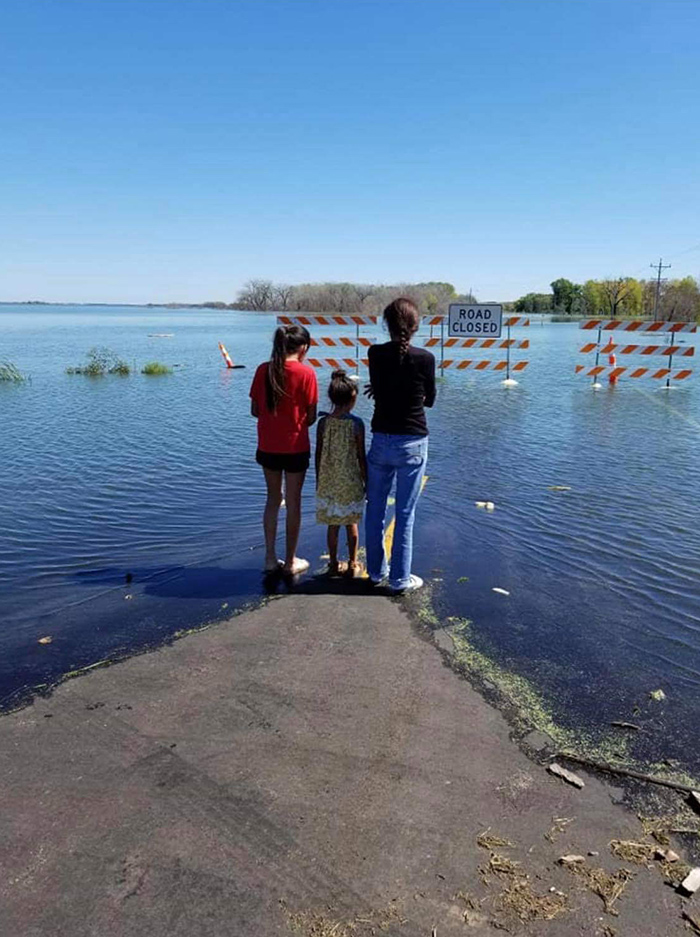What we’re watching: Weekly disaster update, October 30

We know all too well that disaster can strike anytime, anywhere in the world. Some disasters make headlines; others do not. Here at the Center for Disaster Philanthropy (CDP), we monitor the status of disasters worldwide and compile a list of the ones we’re tracking weekly, along with relevant disaster-related media coverage.
Here’s what we’re watching for the week of Oct. 30, 2023.
New or Emerging Disasters
Hurricane – Mexico: Hurricane Otis struck Mexico’s Pacific coast five miles south of Acapulco on Oct. 25 at 1:25 a.m. CT as a Category 5 storm. It is the strongest storm in history to hit the Eastern Pacific Coast. On Oct. 24, Otis underwent one of the fastest and strongest rapid intensification cycles ever witnessed, transforming from a tropical storm to a Category 4 storm in under 12 hours.
The storm’s destruction cut off Acapulco, a city of nearly 1 million people, for the first day. On Oct. 29, Mexican authorities said the storm’s death toll had reached 48, with several more still missing. Aid has been slow to arrive, and some residents expressed frustration at seeing aid and personnel in tourist areas of Acapulco but not in the surrounding areas.
In an update on Oct. 29, the government said Otis damaged 273,844 homes in the state of Guerrero, along with 600 hotels and condominiums. Guerrero Governor Evelyn Salgado said electricity had been restored to 58% of Acapulco.
Some estimates put the cost of damage as high as $15 billion.
For more, see our Hurricane Otis disaster profile.
Cyclone – Hamoon: Tropical Cyclone Hamoon made landfall over the southeastern coast of Bangladesh the night of Oct. 24-25. On Oct. 25, the center was located about 25 miles (40 kilometers) east-southeast of Chittagong City. At least three deaths were reported in Cox’s Bazar, the world’s largest refugee camp, which is home to an estimated 1.24 million people. The International Rescue Committee said Hamoon affected more than 470,000 people as well as 900 shelters in Cox’s Bazar housing Rohingya refugees.
Cyclone – Vanuatu: Severe Tropical Cyclone Lola tore through Vanuatu last week, resulting in significant damage. Lola became the earliest Category 5 (Australian system) storm on record for the Southern Hemisphere. The cyclone made landfall on the eastern shores of Maewo and Pentecost islands on the night of Oct. 25 as a Category 4. Lola affected around 150,000 people, nearly half of the country’s population.
Vanuatu’s National Disaster Management Office noted various impacts in their Oct. 28 situation report, including damage to water supply systems, gardens, schools and roads, and disease outbreaks. Lola is the third cyclone to hit the country in seven months, meaning communities just beginning to recover from Cyclones Judy and Kevin are feeling the compounding effects of another disaster. Remnants of Lola brought heavy rain to the northern coast of New Zealand’s north island and flooded roads.
Cyclone – Yemen: A cyclonic storm named Tej made landfall on the eastern Yemeni coast overnight between Oct. 23 and 24. The UN Office for the Coordination of Humanitarian Affairs reports more than 10,000 households have been affected in Socotra, Hadramawt and Al Maharah governorates. The cyclone damaged homes and impacted the agriculture and fishery sectors.
Parts of Yemen, an ordinarily dry country, saw eight times the average yearly rainfall from Tej. The Al Ghaydah airport in Al Mahrah Governorate recorded 17 inches of rain.
Yemen is already experiencing a years-long complex humanitarian emergency, with 21.6 million people requiring humanitarian assistance in 2023. The World Health Organization said after the storm, Yemen’s health system is already overburdened with the impact of nine years of conflict.
Previous/Ongoing Disasters
Complex Humanitarian Emergency – Gaza/Israel: On Oct. 29, at least 33 trucks carrying water, food and medical supplies entered Gaza through the Rafah crossing with Egypt. The UN says at least 100 daily trucks are required to meet humanitarian needs.
According to the Israeli authorities, 239 people are held captive in Gaza, including Israelis and foreign nationals. Through Oct. 29, the fatality toll in Gaza since the start of the most recent hostilities reached 8,005, of whom 67% are reportedly children and women.
Save the Children said on Oct. 29 that the number of children reported killed in Gaza in three weeks has surpassed the annual number of children killed across the world’s conflict zones since 2019. By a recorded vote of 121 in favor to 14 against, with 44 abstentions, the UN General Assembly adopted a resolution on Oct. 27 demanding the unhindered provision of essential aid to civilians throughout the Gaza Strip.
Complex Humanitarian Emergency – Nagorno-Karabakh/Armenia: On Sept. 20, Azerbaijan declared control of an Armenian enclave within its borders. According to the Center for Strategic and International Studies, “Nagorno-Karabakh, a contested mountainous region located in the South Caucasus, has been the epicenter of two large-scale conflicts and intermittent clashes between Armenia and Azerbaijan for well over three decades.”
As of Oct. 4, the UN Refugee Agency recorded 100,632 refugees from Nagorno-Karabakh in Armenia. As reported by The New Humanitarian, with international headlines focused on other crises, humanitarians are concerned the lack of attention may result in less funding than required to address the needs of a newly displaced population as winter nears. Critical requirements for this population include access to food, shelter, health care and psychological support.
Saltwater Intrusion – Southeast Louisiana: Months of severe drought, heat and low rainfall levels across the Mississippi watershed led to lower-than-usual water levels in the river. This allowed a saltwater wedge from the Gulf of Mexico to travel upstream. While the Army Corps of Engineers said in mid-October that all of Orleans and Jefferson parishes were in the clear, lower Plaquemines parish has shown a spike in two groups of compounds that result from the water disinfection process, and some residents and experts are concerned.
In addition to the disasters listed above, we actively monitor the following disasters or humanitarian emergencies. For more information, see the relevant disaster profiles, which are updated regularly.
- Afghanistan Humanitarian Crisis
- 2023 Atlantic Hurricane Season
- Horn of Africa Hunger Crisis
- 2023 Libya Floods
- 2023 Morocco Earthquake
- Sudan Humanitarian Crisis
- 2023 US Tornadoes
- 2023 Turkey-Syria Earthquake
- Ukraine Humanitarian Crisis
Complex Humanitarian Emergencies – Cameroon
Many places worldwide are experiencing emergencies caused by conflict, climate change, drought, famine, economic challenges and other conditions that combine to create a complex humanitarian emergency (CHE). CDP maintains complete profiles on several CHEs, and what CDP considers Level 1 CHEs are profiled in this weekly blog post and tracked.
Cameroon’s complex, protracted humanitarian crisis results from inter-communal violence in the Far North region, insecurity in the Northwest and Southwest (NWSW) region, and crises in Nigeria and Central African Republic (CAR). In 2023, 4.7 million people need humanitarian assistance and protection, a 20% increase from last year.
Health care professionals and infrastructure have suffered due to targeted attacks, worsening people’s access to health services. From January to July 2023, at least 16 incidents of violence against or obstruction of health care were reported, including 12 in the NWSW regions and four in the Far North.
Education is another sector badly affected by the country’s crises, with millions of children left without safe education. At least 2,245 schools are still not functioning in 2023 in the NWSW due to attacks and threats perpetuated by non-state armed groups. In addition to insecurity, devastating floods mean 1.4 million children need education assistance.
As of Oct. 5, donors had funded only 26.5% of Cameroon’s 2023 Humanitarian Response Plan.
Upcoming webinar
Nov. 9: Indigenous land management: Decreasing disasters and increasing resilience

What We’re Reading
- Should the media stop using the term “natural disaster”? – SMC Spain: Spoiler alert – the answer is yes. Kevin Blanchard, who started the campaign #NoNaturalDisasters, explains why the language used when covering tragedies such as earthquakes and floods is important.
- Decolonise How? | Hang on, “humanitarian” might not mean what you think it does – The New Humanitarian: Patrick Gathara argues that journalists and others should be careful when employing the language of humanitarianism, “as it can also be a language of moral obfuscation rather than clarity.”
- The feeling’s mutual: the humanitarian sector must help local people and communities to help themselves – ALNAP: Simone di Vicenz, Head of Humanitarian Policy, Practice and Advocacy at Christian Aid, provides a summary of a webinar on mutual aid hosted by ALNAP, Local to Global Protection and Christian Aid.
- What do Americans think is the biggest threat from global warming? – Yale Program on Climate Communication: In the author’s March 2021 Climate Change in the American Mind survey, respondents were asked, “What do you think is the greatest threat that global warming poses to the United States, if any?” The most common theme was weather extremes and changes.
- The Father of Environmental Justice Exposes the Geography of Inequity – Scientific American: Robert D. Bullard was the first scientist to publish systematic research on the links between race and exposure to pollution. In this interview, Bullard discusses his work and its impact in the U.S. and beyond.
The annual Cedar City Sheep Parade occurred on Oct. 30, with some 1,000 sheep marching down the Utah city’s main street.
